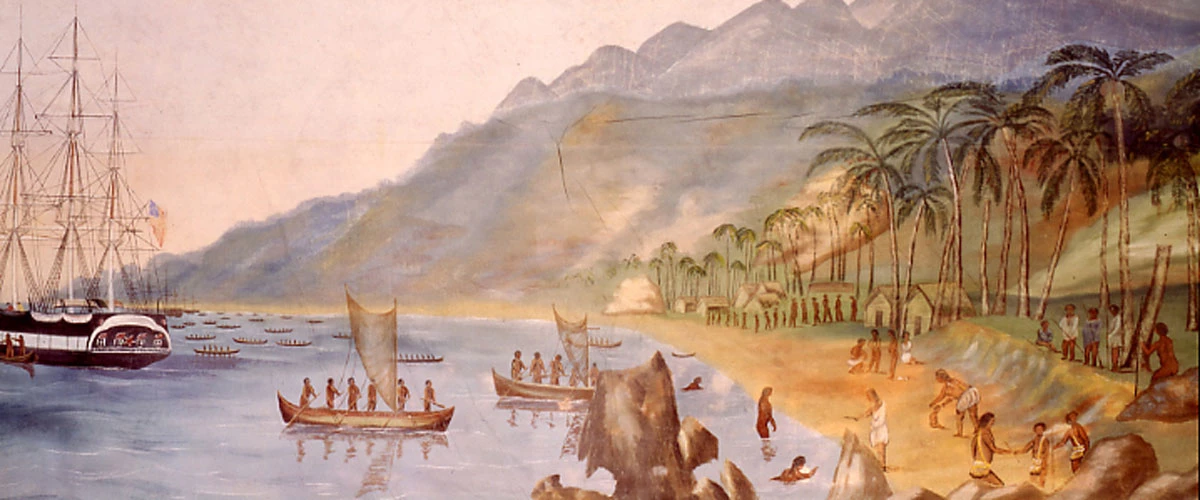
The overfishing of whales in the North Atlantic pushed the Yankee whalemen ever further to remote parts of the globe from Cape Verde, to Cape Horn, to the great unknown Pacific. Harsh conditions on board whalers caused many crewmen to abandon ship. New shipmates from newly discovered territories took their places. By the mid-nineteenth century, 20% of the crew on New Bedford whaling vessels were Pacific Islanders. The most favored mariners were recruited from the Kingdom of Hawaii, causing such a drain of young men that court officials required whaling captains to post bond with a pledge to return each man within three years. Hawaii, being centrally located in the Pacific and home to accessible and friendly harbors like Honolulu, Lahaina, and Hilo, was an ideal center for Pacific whaling. Supplies firewood, agricultural products, and chandlery services made Hawaii the most visited of all the island groups. By the 1840s, nearly 400 whaleships stopped off in Hawaiian ports annually. Not only did a large Anglo-American population settle in Hawaii, but a large Polynesian contingent settled in New Bedford. The deep familial, social, and economic bonds between these two places, on opposite sides of the globe, developed because of the whaling industry. “Queequeg,” a fictional character made famous by Herman Melville in Moby-Dick, illustrates the close bonds between Pacific Islanders and New Bedford. |
Last updated: February 1, 2019
